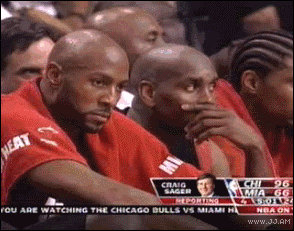If McDonough felt that way, and if he still expected to re-sign Bledsoe (an outcome that the Suns could control), then why did he ink Thomas in the first place? When Phoenix obtained Thomas, I imagined that the team's plan was to often feature a three-guard offense similar to what Detroit ran in the late eighties and early nineties with Isiah Thomas, Joe Dumars, and Vinnie Johnson—an alignment (with Johnson coming off the bench and then playing with Thomas and Dumars for significant stretches) that helped produce five straight trips to the Eastern Conference Finals (1987-1991), three straight trips to NBA Finals (1988-1990), and consecutive NBA championships (1989 and 1990). All of those guards were small (6'3" and under in listed heights, almost certainly 6'2" and under in actual heights); all of them were probably shorter than Dragic, although none were as small as Isaiah Thomas. And they thrived in an era where many small forwards were 6'8" or taller and/or constituted major post-up players and/or major rebounders and/or very physical players—Larry Bird and James Worthy for just a couple of examples.
So I felt that McDonough was planning on seeing the three of them play together a fair amount, especially since today's NBA—with the rules and the court spacing—is more conducive to that kind of outside-the-box concept. If he was not planning on doing so, then he really should not have inked Thomas, even if the mighty mite provided insurance for Bledsoe given the latter's restricted free agency and history of knee injuries.
For the record (at least according to the available data, which at least represents the overwhelming majority of the data), the Suns played Thomas, Dragic, and Bledsoe together for a total of 95.8 minutes in two different five-man lineups—numbers seven and eighteen here:
http://www.82games.com/1415/1415PHO2.HTMThe super-small lineup (number seven), with Thomas, Dragic, and Bledsoe playing with P.J. Tucker (as the nominal power forward) and Markieff Morris (as the nominal center) produced a modest +2 net points total. That lineup constituted one of the Suns' worst defensively, because it was obviously just too small—there was no true center and four of the players were probably under 6'4" in actual height. Additionally, that lineup likely enabled opponents to play small lineups themselves and thus switch defensive assignments easily and effectively, diminishing Phoenix's offense advantage.
The bigger lineup (number eighteen), however, with Thomas, Dragic, and Bledsoe playing with Markieff Morris and Alex Len, performed spectacularly at +36. Granted, the minutes sample was only half as large, but it represented the Suns' best offensive lineup (1.32 points scored per possession) and their best defensive lineup (0.83 points allowed per possession). Evidently, that lineup gave the Suns the best of both worlds: they could play their three best offensive players (Thomas, Dragic, and Bledsoe) simultaneously while also enjoying enough size and rim protection defensively. Len's size might have also resulted in better offensive screens and a greater presence on the offensive glass, thus enhancing the unit's offensive efficiency as well.
In other words, there was some serious potential there—if Phoenix had begun featuring that lineup for even five or ten minutes per game, the Suns probably would have made the playoffs last year. Potentially, Hornacek just needed more time to sort through matters and develop his rotation, or he just needed more input from the "analytics" people. Yet McDonough either was unaware of this data or he decided that other priorities—Dragic's looming free agency and some of the chemistry concerns—warranted pushing the reset button and rearranging the roster. Still, playing the three guards together could work—doing so resulted in a net of +38 points over 95.8 minutes. And when playing the three of them with the Suns' best natural center (Len) and starting power foward (Markieff Morris), the alignment worked spectacularly.
So McDonough signed a player whose acquisition only really made sense if the Suns would use a three-guard lineup for a fair amount of minutes. And at least with the right complements of big men, that lineup indeed worked with spectacular efficiency. But McDonough then traded two of the three guards on the same day and later proclaimed that the trio was not not viable as an on-court unit.
If any of that makes McDonough seem like a guy who really knows what he is doing, let me know ...











